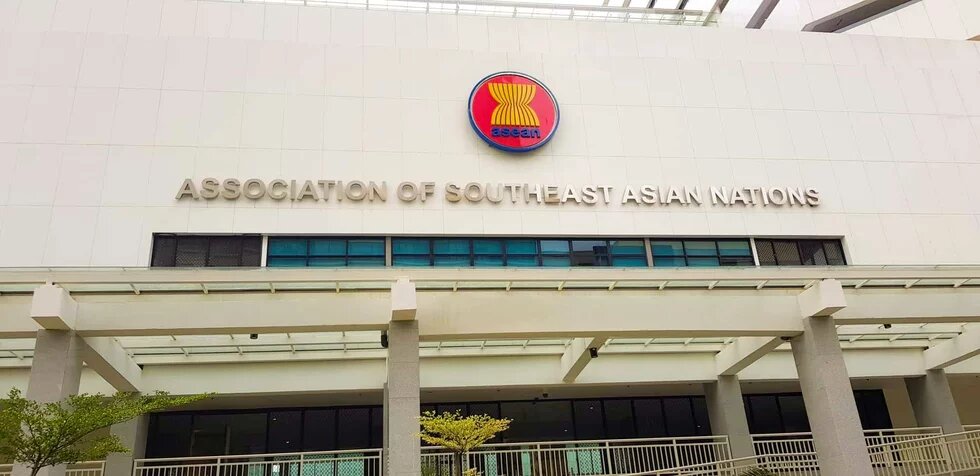The year 2022 brings in not just one or two but a handful of hot button issues to deal with for ASEAN, the Association of Southeast Asian Nations. Between economic recovery from the pandemic through to internal civil war within Myanmar and external disputes and alliances, Cambodia assumes Chair of ASEAN with plenty to consider. ASEAN’s culture and intergovernmental model value cooperation but a different kind of multilateralism may be changing the stakes and strategies in negotiation across the ten member states.

- First, the economic recovery from the COVID-19 pandemic. The pandemic has brought financial hardship to millions of families, sending people towards hunger, increasing the number of school dropouts, unemployment, worsening the gaps of skill development for youth, increasing socioeconomic pressures to women, and sending parts of the population into extreme poverty. ASEAN saw this as undermining what had been achieved for the Sustainable Development Goals.
- Second, the disrespect to territorial integrity that will complicate efforts to maintain peace in the South China Sea. Despite the joint statement between ASEAN and China in November 2021, China fired a missile from a hypersonic weapon in the South China Sea, attacked two of The Philippines’ supply ships inside the Philippines Exclusive Economic Zone near Anyungin Shoal, and also sent a diplomatic note to Indonesia claiming that the Indonesian activity to drill oil and gas at the North Natuna Sea is happening in China’s territory and must be stopped.
- Third, the declaration of the AUKUS (Australia–United Kingdom–United States) alliance and the US advancement of its Free and Open Indo-Pacific with the Quad (US–Australia–India–Japan) as its core. AUKUS and the US version of Indo-Pacific was perceived by some countries to undermine regional peace and stability, instil suspicion among neighbours, aggravate the arms race, and condition countries for military responses to tensions.
- Fourth, the civil war in Myanmar, or what ASEAN call “the Myanmar crisis”. The five-point consensus of the ASEAN Leaders’ Meeting in April 2021 has undeniably stalled. The Myanmar humanitarian situation is worsening as violence continues. While there was a deal between the US and China to block Myanmar’s junta from the UN, there’s an absence of a legitimate Myanmar authority acknowledged by the United Nations.
- Fifth, the rising energy demand and the urgent need for transitioning to affordable renewable energy. Electricity consumption in Southeast Asia is projected to double by 2040, with an annual growth rate of nearly 4% twice as fast as the rest of the world. Due to the rising need for fossil fuel to meet such demand, it becomes urgent to transition to affordable renewable energy.
- Sixth, enforcement of 'The Blue Economy’. This enters the priority agenda of ASEAN giving attention to the oceans as a wellspring for economic resources. The implementation and enforcement of the blue economy is challenging given the need for big investment, acquisition of technology, and cross-border collaboration.
- Seventh, the green economy to contribute to the Sustainable Development Goals. The International Labour Organization (ILO) is encouraging ASEAN to enable the environment for green jobs policies, from linking development planning to greening, recognizing the need for sector-specific strategies and also adjustment in training and skills development activities.
- And eighth, the effective implementation of the Regional Comprehensive Economic Partnership (RCEP). RCEP aims at enhancing ASEAN centrality in regional trade, investment, e-commerce, intellectual property, small-medium enterprises, and competition, as well as economic and technical cooperation and government procurement.
In its rhetoric, ASEAN is optimistic. Cambodia as the ASEAN Chair for 2022 takes the theme ASEAN A.C.T.: Addressing Challenges Together. Prime Minister Hun Sen of Cambodia mentioned his three wishes for 2022: to see the crisis in Myanmar improve, for ASEAN-10 to functioning again, and to see the Code of Conduct in the South China Sea be adopted. Indonesia, as the upcoming ASEAN Chair of 2023, spoke about the need for ASEAN to synergize with international forums such as the G20 (Group of Twenty) that Indonesia is chairing in 2022 and the Asia-Pacific Economic Cooperation (APEC) that Thailand is chairing in 2022. In her annual press release in January 2022, Indonesian Minister of Foreign Affairs Retno Marsudi calls for ASEAN to strengthen unity and centrality to deal with the Myanmar crisis. On blue and green economy and energy, Indonesia refers to the ASEAN Outlook on the Indo-Pacific to frame further dialogues and programs on the issues.
What to expect of ASEAN in 2022 onwards? This is important given the myriad of ideas, the time-sensitive agendas, and the heightened competition among world economic powers. Two aspects of ASEAN are discussed further: the institutionalization of norms and standards in ASEAN, and the new multilateralism.
The institutionalization of norms and standards
ASEAN adopts a particular intergovernmental model of cooperating among neighbours. The model requires a ten-member-state consensus on every decision (both technical, budget and substance), an equal rate of financial dues from each member state for ASEAN pools of activity budget, a careful gesture in proposing ideas so that the principle of non-interference, territorial integrity and national identity of each member state is upheld, and a friendliness when expressing ideas or disagreements. An informal approach to air ideas prior to a formal meeting may work at times but not always. A formal meeting may last for hours, days, or months. Yet, there have also been occasions when a member state requested the ASEAN Secretariat to take out the record of what it said in a previous meeting for untold reasons.
Nevertheless, this is the culture of cooperation in ASEAN. Getting into an agreement requires a lot of art and flexibility in informing, convincing, pressing, and negotiating with other member states. The dialogue partners to ASEAN adjust to such a culture. There are dialogue partners that choose to do an annual interface with certain ASEAN bodies, while others focus on funding activities. The United Nations appoint a representative to communicate regularly with the country representatives of various sectoral bodies. There are ASEAN bodies, such as the ASEAN Intergovernmental Commission on Human Rights (AICHR), which are open for civil society engagements. But their modes of engagement vary by theme and preferences of the incumbent country representatives. Sensitivity to personal connections and preferences is just as important as following the standard protocols in ASEAN.
Therefore, institutionally, hot button issues are handled using the same pace and culture as other issues. What would make a difference are the dynamics during the meetings. Getting joint statements from the head of government is key to being on the priority list. Getting endorsement from the Chair or ministerial-level meetings may help too. But typically ASEAN would only issue a long list of activities, who is involved, the common denominator, and what else is needed.
An ASEAN Chair has a prerogative to set certain focus or approach in all ASEAN meetings. Prime Minister Hun Sen, for instance, began the Cambodian chairmanship by visiting General Min Aung Hlaing in Naypyitaw, Myanmar, and bringing along Deputy Prime Minister Prak Sokhonn, the newly appointed ASEAN Special Envoy for Myanmar. He was also determined to invite the military-appointed foreign minister of Myanmar to the ASEAN foreign ministers meeting, despite disagreements from other members, and eventually the meeting has been postponed.
Thus institutionally, ASEAN in 2022 will hardly provide room for dissenting opinions with that of the Chair. If Cambodia successfully issues a consensus on a joint communique, other countries would have compromised substantially to get to a common denominator. Issues affecting China can be expected to be minor during the Cambodian chairmanship agenda, as China is an important investor and political ally to Cambodia. Issues on economic recovery, on the blue economy, green economy, RCEP, energy demand and energy transition are expected to be sent to senior official meeting levels or workshops. The link between ASEAN meetings with G20 and APEC are expected to be at the rhetoric level only.
When ASEAN chairmanship is transferred to Indonesia in 2023, the dynamic may change. Indonesia is expected to launch ideas, programs and activities at different levels to respond to the list of priority or pressing matters. But institutionally, the room for concrete action would depend on the success to inform, convince, press and negotiate with the other member states and with dialogue partners. Most of these hot button issues require heavy financial investments, which is challenging to raise by ASEAN member states under COVID-19 pandemic constraints. Moreover, if the Myanmar civil war continues, then ASEAN lacks legitimacy in any of its consensus – unless Indonesia takes the brave decision to redefine consensus under pressing needs. After all, it is out in the open that the ASEAN Charter was discussed in 2017 to be updated and revised.
The new multilateralism
What may not be business as usual for ASEAN are the pressures from external powers. The dynamics in the South China Sea would depend on how China responds vis-à-vis AUKUS and the US. ASEAN may issue a Code of Conduct and urge respect to the United Nations Convention on the Law of the Sea (UNCLOS) and the Treaty of Amity and Cooperation in Southeast Asia (TAC), but China has its own calculations, independent of ASEAN’s call, under military and economic bilateral pressures from the US, Australia and the UK. European Union (EU) countries are not standing idle either. The EU delegation may meet and discuss with ASEAN, even making joint statements on certain norms, but the EU too has an interest to respond in its own speed and substance to China, US, Australia and the UK.
ASEAN may wish to contain the urge of other countries by pulling them into the meeting tables, but today’s multilateralism has changed. Some call this multilateralism 2.0, namely the new reality that international cooperation is a compulsion, although participating in global governance allows states to ensure their own sovereignty too. Others see multilateralism as changing in the emergence of network thinking and a transformation from a closed to an open system. Others suggest of an institutional balancing among major states under high strategic uncertainty and high economic interdependence.
Without needing to create a new label, let’s be bold on what has changed in multilateralism and how it would affect ASEAN too. We need to realize that multilateralism today stems from different assumptions from the multilateralism we knew. If in the past we assumed that countries engaging in multilateralism were coming together because of a common interest, today countries come together because of different interests, even competing and clashing interests. Why? Because confronting each other and tying entire stakeholders in a country to confrontations with other countries is risky to the economy. In the era where anything can be commodified and capitalized into greater gains, stretching patience through meetings and dialogues becomes a strategy to achieve goals. Meetings and dialogues become a vehicle to gain information for better bargaining leverage for subsequent rounds of political negotiation and business deals. Thus, the second differentiating point of multilateralism today: openness in a multilateral forum may actually result in a backlash. Opening the (nation) self in a multilateral forum may reveal vulnerabilities.
Under this new setting of multilateralism, ASEAN may remain relevant as a platform for dialogues and meetings. The question is whether the meetings bring the member states closer together or farther apart? Do ASEAN meetings have enough room to discuss what member states need, especially the poor and marginalized in society? Do the ASEAN meetings try to reconcile differences of opinions and perspectives among the participating countries? Let us throw these questions out for ASEAN leaders to ponder and act upon.
This article was first published in the Heinrich-Böll-Stiftung Southeast Asia office. The views expressed in this article are not necessarily those of the Heinrich-Böll-Stiftung.

